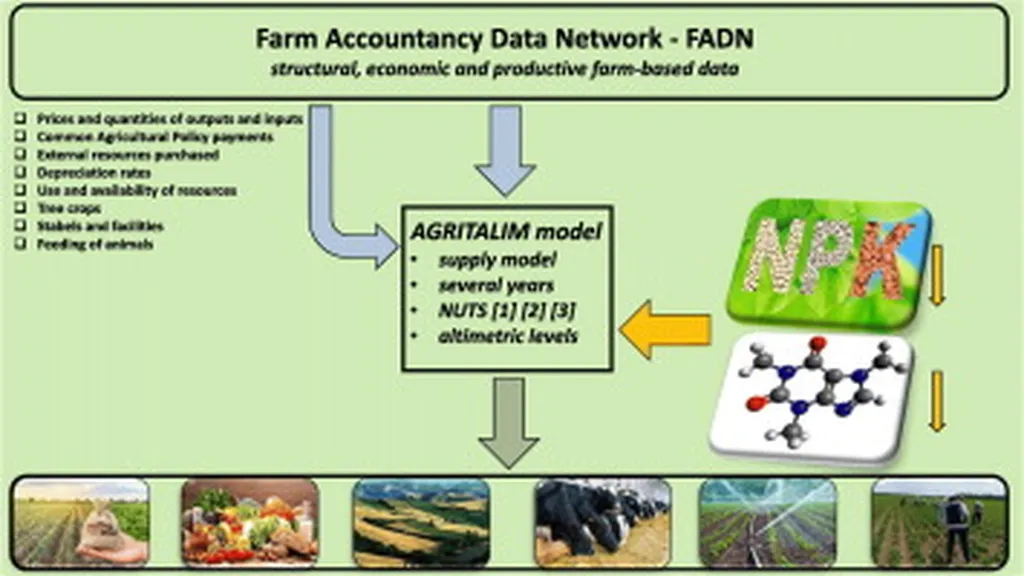In the heart of Italy, a pressing question looms over the agricultural sector: how can farmers reduce their use of chemical fertilizers without sacrificing technical efficiency? This question is at the core of a recent study led by Nicola Galluzzo, a researcher at the Association of Geographical and Economic Studies in Rural Areas (ASGEAR) in Rieti, Italy. The study, published in the journal ‘Икономика и управление на селското стопанство’ (translated to English as ‘Economics and Management of Agriculture’), offers a data-driven approach to this challenge, with implications that could resonate across the energy sector as well.
Galluzzo and his team turned to the Farm Accountancy Data Network (FADN) dataset, a comprehensive collection of farm financial data, to assess the technical efficiency of Italian farms. They employed a dual approach, using Data Envelopment Analysis (DEA) and an iterative decision tree, to evaluate the impact of reducing chemical fertilizers—specifically nitrogen (N), phosphorus (P), and potassium (K)—on farm efficiency.
The results were clear: there is a fundamental link between the reduction of chemical fertilizers and technical efficiency. “The drop in chemical fertilizers has impacted the technical efficiency in Italian farms part of the FADN dataset,” Galluzzo noted. This finding underscores the delicate balance farmers must strike between environmental sustainability and productive output.
The study’s implications extend beyond the agricultural sector. As the energy sector increasingly explores sustainable practices, the insights from this research could inform strategies to optimize resource use without compromising efficiency. For instance, the iterative decision tree approach could be adapted to evaluate the impact of reducing energy inputs in various industrial processes.
Moreover, the study highlights the need for targeted actions to support farmers in maintaining technical efficiency amid reduced fertilizer use. “There is a need to put into practice some actions towards farmers to compensate the reduction in technical efficiency and the produced output in the productive process,” Galluzzo emphasized. This could involve investing in alternative fertilizers, improving farming techniques, or providing financial incentives for sustainable practices.
As the agricultural and energy sectors continue to evolve, the insights from this research could shape future developments. By leveraging data-driven approaches, stakeholders can make informed decisions that balance environmental sustainability with economic viability. The study by Galluzzo and his team serves as a testament to the power of data in driving sustainable practices, offering a roadmap for the future of agriculture and beyond.

